Overview: Between Putin’s mobilization of 300k Russian troops and Fed Chair Powell expected to lead the central bank to its third consecutive 75 bp hike later today, the dollar rides high. It has recorded new two-year highs against the dollar bloc and Chinese yuan, while sterling was sent to new lows since 1985. Asia Pacific bourses were a sea of red for the sixth decline in the regional benchmark in the past seven sessions. Surprisingly, Europe’s Stoxx 600 is trying to snap a six-day losing streak and is posting small gains near midday. Energy and utilities are leading the move. US futures are steady. Benchmark bond yields are 3-5 bp lower today. That puts the US 10-year near 3.53%. Gold remains stuck in the range seen at the end of last week (~$1654-$1680) but is firm. December WTI is nearly $2 higher. It is above $85 a barrel. While it has flirted with this level on an intraday basis, it has not closed above it in a week. US natgas is posting its first gain in five sessions, while the European benchmark is extending yesterday’s 13.4% gain with another 5.5% increase. Iron ore is off slightly but enough to extend its losing streak for the sixth session. December copper is near two-week lows as it trades heavily for the third consecutive session. December wheat is extending yesterday’s strong advance (7.6%). It is above $9 a bushel for the first time in two months.
Asia Pacific
The Bank of Japan's meeting concludes tomorrow. Given its inflation forecasts, which, as we have noted are in sync with the private sector (median forecast in Bloomberg's survey) and the weak growth impulses, it is not clear what there is for the BOJ to do. What is the problem that needs to be fixed? If it is yen weakness (seems consistent with the easing of financial conditions and the deterioration of its external balances), a rate hike might not be the fix. Consider New Zealand. The RBNZ hiked the cash target rate by 225 bp this year and 50 bp in Q4 22. The New Zealand dollar has depreciated by about 13.5% against the dollar this year. In Australia, the RBA has lifted its target rate by 225 bp and the Australian dollar has declined by around 7.5%. The Swedish krona fell nearly 1% yesterday after the Riksbank delivered 100 bp hike. Nor is the yen the most volatile of the G10 currencies. The Antipodeans and Scandis more volatile (three-month implied and historic volatility).
The more immediate challenge for the BOJ is that the 10-year government bond is bumping along its 0.25% cap. That said, the benchmark 10-year bond did not trade on Tuesday after Monday holiday. It is the first time this has happened since June. The BOJ stepped in today and in an unscheduled purchase, bought JPY150 bln (~$1.05 bln) 5-10-year bonds and JPY100 bln 10–25-year bonds. Separately, former Ministry of Finance official Yamasaki warned that Japan is ready to intervene if necessary and if does not need to wait for the US permission. Still, we suggest that intervention that is not unexpected, that is not multilateral, and does not signal a change in policy is unlikely to be effective outside of the initial market reaction. Failed intervention is arguable worse than no intervention.
Taiwan reported a 2.0% increase in August exports yesterday, which were a little better than expected. Today South Korea reported poor trade figures for the first 20-days of September. Exports fell by 8.7% and imports rose 6.1%. Recall South Korea's August trade deficit (~$10.2 bln) was a record shortfall. Meanwhile, the Asian Development Bank cut China's growth forecast for this year to 3.3% from 4.0%. Lastly, and almost predictably, after US President Biden said that US would defend Taiwan from an "unprecedented attack", National Security Adviser Sullivan soft-pedalled the comments, saying the President was answering a hypothetical question and announced no change in the US one-China policy.
The US dollar edged a little higher to trade above JPY144.00 briefly for the first time in a week. However, it came off in late Asia and turned over and recorded the session low near JPY143.35. Yesterday's low was around JPY142.90. Ahead of the FOMC meeting, the dollar could retest the space above JPY144.00. The Australian dollar has been sold to new two-year lows about $0.6655. It is on the defensive, and the $0.6600 target is next important chart area. On the upside, a move above $0.6685 is needed to stabilize the tone. The dollar gapped higher against the Chinese yuan to trade at new two-year highs above CNY7.05. Yesterday's high was about CNY7.0210. Today's low is CNY7.0265. The PBOC's statement leaves the interest rate door open as officials seems more concerned about the growth prospects that the exchange rate per se. The PBOC set the dollar's reference rate at CNY6.9536. The median projection in Bloomberg's survey was for CNY7.0161. Against the offshore yuan, the dollar reached almost CNH7.0660. Lastly, we note that despite the Bank of Korea reportedly asking for hourly reports from FX dealers about the supply and demand of dollars, the greenback recovered all of yesterday's losses plus a little more. The greenback is poised to close at its best level since 2009.
Europe
There were rumors yesterday of Russia's mobilization, but outside of Russian equities, there did not seem to be much of a reaction. It seemed like a logical step given the reversal of its early battlefield success and after the questions apparently raised by China's Xi and India's Modi. The US continues to arm Ukraine, with apparently more sophisticated weapons and intelligence. Yet, the news that Putin announced the mobilization of 300k troops and is proceeding with plans to annex part of Ukraine added to the weight on the European currencies and assets, while helping to lift oil, natgas, and gold prices.
The Bank of England meets Thursday. Among economists, a 50 bp increase is easily the favorite scenario. In Blomberg's survey, the average of some 50 economists was 2.29% from the current 1.75% target. The swaps market, which is not just a speculative market but also used for hedging, shows about a 60% chance of a 75 bp increase. The Bank of England began the cycle last December with a 15 bp step. This year it has hiked by 150 bp. An earlier start to the tightening did not prevent UK inflation from accelerating this year (Noting that the US two-year yield rose more than 200 bp from September 2021, when the Fed began preparing the market for a hike, until March when it delivered its first hike, would US inflation necessarily be lower?) to over 10% in July (9.9% in August). Sterling is a quarter of a cent from its lowest level since 1985. It has fallen nearly 16% this year against the dollar, behind the Swedish krona (~ -17%) and the Japanese yen (~ -19.9%).
The Swiss National Bank also meets tomorrow. It has hiked rates once, a 50 bp move in June. The deposit rate is still below zero. Yesterday, it surpassed the Canadian dollar to be the most resilient currency this year, down 5.2% against the US dollar. The SNB is expected to deliver a 75 bp that would bring the deposit rate to 0.50%. It would be the first positive setting since a negative rate was adopted in January 2015. That leaves the BOJ as the only central bank with a sub-zero policy rate. That said, there are an estimated $1.84 trillion of negative yielding bonds globally. This is down from $11.3 trillion at the end of last year.
Norway's central bank was among the first to begin normalizing rates and delivered its first hike last September. It lifted the deposit rate by 50 bp last year and 125 bp this year. Norway's CPI accelerated from 3.2% in January to 6.8% in July. It slipped to 6.5% in August. The underlying rate, which adjusts to tax changes and excludes energy, rose from 1.3% in January to 4.7% in August. The krone has fallen by around 14.5% against the dollar and about 2.3% against the euro.
The euro recorded an outside down day yesterday, trading on both sides of Monday's range and closing below its low. Follow-through selling today has seen the euro trade blow $0.9900 for the first time in two weeks. It fell to $0.9885 in late Asian turnover. It has stabilized in the European trading. With Putin and Powell in focus, the euro may remain on its backfoot now until the reaction to the FOMC meeting. Look for the $0.9920 area to cap upticks while the risk is for a push through the 20-year low set on September 6 near $0.9865. Sterling is not waiting. It is already trading at new lows since 1985, having reached almost $1.13 in late Asian dealing. The bounce back in early European turnover ran out of steam near $1.1360. It probably needs to resurface above the $1.1380-$1.1400 area to steady the tone.
America
When the Bank of Canada delivered a 100 bp hike in July, some said this was a tell for the Fed. We said no. Sweden's Riksbank hiked by 100 bp yesterday and some pundits said this boosts pressure on the Fed to hike 100 bp. Again, we say no. Among the various things that Fed officials will discuss, the developments in Ottawa and Stockholm are not particularly salient.
What is important to the Fed is that the US labor market appears strong. Weekly jobless claims have fallen for five consecutive weeks through September 9 and at 213k at four-month lows. Since the Fed met last (July 27), the private sector added 785k jobs (July and August). In H1, private sector payrolls grew by an average of 438k. The tick up in the unemployment rate (3.7% in August from 3.5% in July) is not surprising and reflects a desirable development, a small rise in the participation rate (62.4% in August, matching the high for the year). Average hourly earnings growth of 5.2% (year-over-year) fails to keep up with inflation but strong enough that it is seen as consistent with a tight labor market.
**It also seems important to many Fed officials that the market continues to expect monetary policy to be eased later next year.**8 The implied yield of the December 2023 Fed funds futures is a little more than 30 bp below that implied yield of the March 2023 contract. About a third of the difference lies Q3 next year and the remainder (~23 bp) in Q4 23.
The Fed will most likely lift the Fed funds target by 75 bp and keep the door open to another move of that magnitude at the next meeting (November 2). The FOMC statement is unlikely to change substantively. The focus will be on the Fed's updated projections (dot plot), which will be extended to 2025 for the first time. In June, the median dot had Fed funds finishing this year at 3.375. There was not dot above 3.875%, which Minneapolis Fed President Kashkari said was projection. The median dot will likely be lifted to a little north of 4%. The median dot for next year was at 3.75%. The implied yield of the December 2023 Fed funds futures is about 4.1%. In June, most Fed officials anticipated lower rates and the median dot for 2024 was 3.375%. The 2025 dots may be interesting, but they are not a commitment, and they really mean very little outside of a snapshot. Perhaps the best context for the 2025 dot is the Fed longer-term rate projection, which is understood to be the neutral rate, when the economy is running at trend and inflation is near the 2% average target. It was at 2.50% in June, and we note that 14 of the 17 projections in June were between 2.25% and 2.50%.
We had previously noted that the market often seemed to respond to the hawkish action and Fed statement one way, but then reversed during the press conference. No matter what the Fed did or said, the market insisted on it being dovish. That seemed to change with Powell's terse statement at Jackson Hole. Between the July FOMC meeting and the Jackson Hole speech, the 2-year yield rose roughly 50 bp. It has risen another 50 bp since Jackson Hole and is near 4%. From the July FOMC meeting to the Jackson Hole speech, the implied yield of the March Fed funds futures contract rose from about 3.3% to about 3.75%, and since then it has risen to roughly 4.40%.
Turning to Canada, its August CPI surprised on the downside for both the headline (7.0% vs. 7.6% in July, and median forecast in Bloomberg's survey for 7.3%) and core measures (average 5.23% vs. 5.4% in July). The softer inflation data on the heels of data showing the economy has lost momentum saw the swap market. Before the CPI figures, the market had almost a 1-in-5 chance that the central bank would hike by 75 bp next month again instead of slowing the pace to a half-of-a-point. Afterwards, the market had a little doubt of 50 bp move.
The US dollar recorded a large outside up day yesterday against the Canadian dollar and settled a new 2.5-year highs around CAD1.3365. Follow-through gains today lifted the greenback to almost CAD1.3400. We have noted that above the CAD1.3340 area (the 50% retracement of the US dollar's decline from the March 2020 panic peak), the next chart points of note were CAD1.3400 to CAD1.3420. Above there, the risk is the (61.8%) retracement seen around CAD1.3650. The Mexican peso is little changed. Its relative resilience is notable. The US dollar is hugging the middle of the broader MXN19.80-MXN20.20 range that has been more or less in place for more than a month. A few hours after the FOMC meeting, Brazil's central bank will make its decision about the 13.75% Selic rate. Most look for the central bank to stand pat. The risk is asymmetrical. If the consensus is wrong, it is because a small rate hike is delivered. Outside of the Russian rouble, the Brazilian real is the strongest emerging market currency this year, with an 8.4% gain against the dollar coming into today's session.
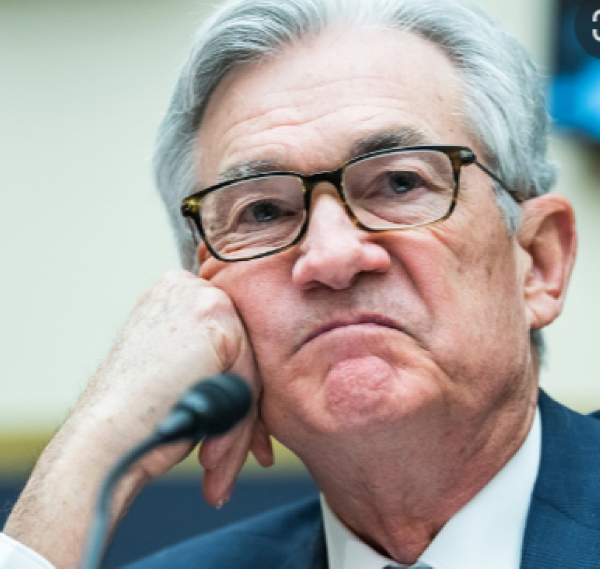





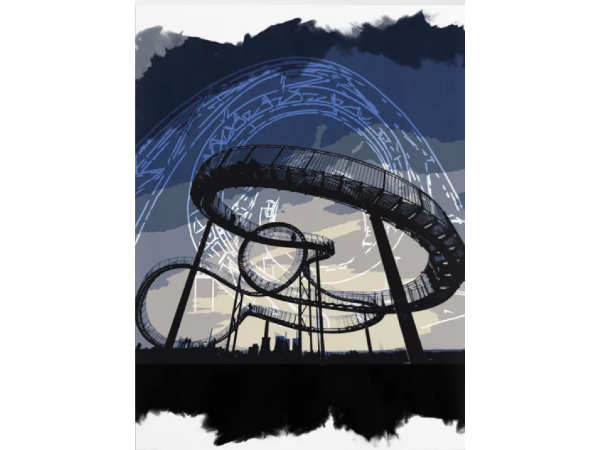
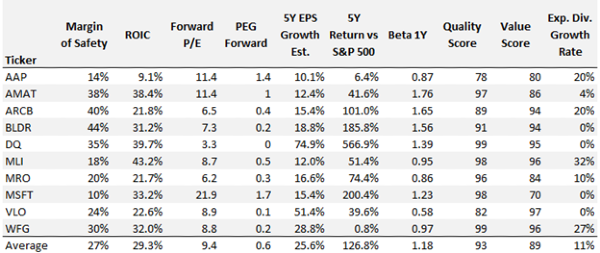

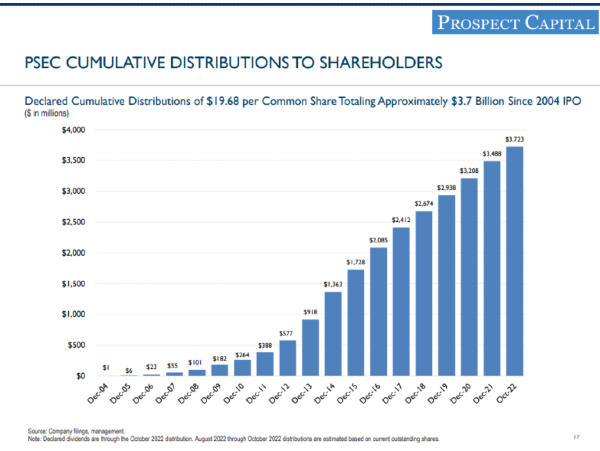


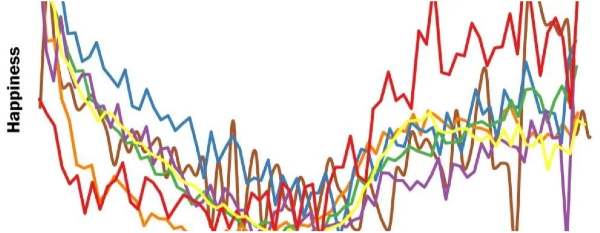



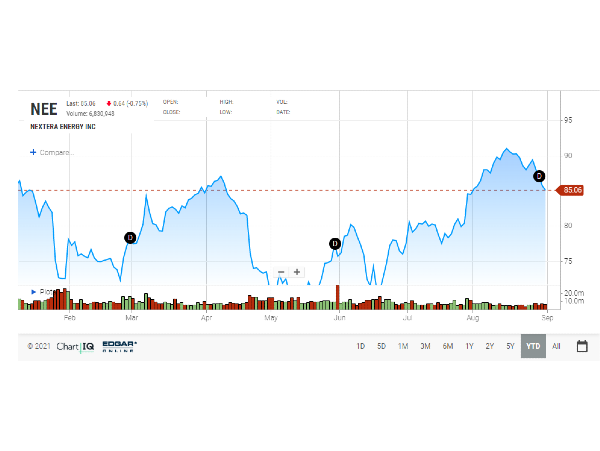


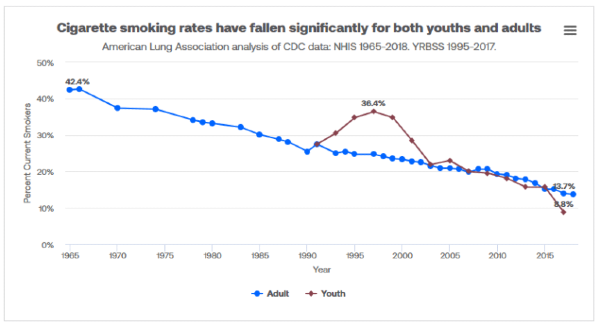










Overview: Between Putin’s mobilization of 300k Russian troops and Fed Chair Powell expected to lead the central bank to its third consecutive 75 bp hike later today, the dollar rides high. It has recorded new two-year highs against the dollar bloc and Chinese yuan, while sterling was sent to new lows since 1985. Asia Pacific bourses were a sea of red for the sixth decline in the regional benchmark in the past seven sessions. Surprisingly, Europe’s Stoxx 600 is trying to snap a six-day losing streak and is posting small gains near midday. Energy and utilities are leading the move. US futures are steady. Benchmark bond yields are 3-5 bp lower today. That puts the US 10-year near 3.53%. Gold remains stuck in the range seen at the end of last week (~$1654-$1680) but is firm. December WTI is nearly $2 higher. It is above $85 a barrel. While it has flirted with this level on an intraday basis, it has not closed above it in a week. US natgas is posting its first gain in five sessions, while the European benchmark is extending yesterday’s 13.4% gain with another 5.5% increase. Iron ore is off slightly but enough to extend its losing streak for the sixth session. December copper is near two-week lows as it trades heavily for the third consecutive session. December wheat is extending yesterday’s strong advance (7.6%). It is above $9 a bushel for the first time in two months.
Asia Pacific
The Bank of Japan's meeting concludes tomorrow. Given its inflation forecasts, which, as we have noted are in sync with the private sector (median forecast in Bloomberg's survey) and the weak growth impulses, it is not clear what there is for the BOJ to do. What is the problem that needs to be fixed? If it is yen weakness (seems consistent with the easing of financial conditions and the deterioration of its external balances), a rate hike might not be the fix. Consider New Zealand. The RBNZ hiked the cash target rate by 225 bp this year and 50 bp in Q4 22. The New Zealand dollar has depreciated by about 13.5% against the dollar this year. In Australia, the RBA has lifted its target rate by 225 bp and the Australian dollar has declined by around 7.5%. The Swedish krona fell nearly 1% yesterday after the Riksbank delivered 100 bp hike. Nor is the yen the most volatile of the G10 currencies. The Antipodeans and Scandis more volatile (three-month implied and historic volatility).
The more immediate challenge for the BOJ is that the 10-year government bond is bumping along its 0.25% cap. That said, the benchmark 10-year bond did not trade on Tuesday after Monday holiday. It is the first time this has happened since June. The BOJ stepped in today and in an unscheduled purchase, bought JPY150 bln (~$1.05 bln) 5-10-year bonds and JPY100 bln 10–25-year bonds. Separately, former Ministry of Finance official Yamasaki warned that Japan is ready to intervene if necessary and if does not need to wait for the US permission. Still, we suggest that intervention that is not unexpected, that is not multilateral, and does not signal a change in policy is unlikely to be effective outside of the initial market reaction. Failed intervention is arguable worse than no intervention.
Taiwan reported a 2.0% increase in August exports yesterday, which were a little better than expected. Today South Korea reported poor trade figures for the first 20-days of September. Exports fell by 8.7% and imports rose 6.1%. Recall South Korea's August trade deficit (~$10.2 bln) was a record shortfall. Meanwhile, the Asian Development Bank cut China's growth forecast for this year to 3.3% from 4.0%. Lastly, and almost predictably, after US President Biden said that US would defend Taiwan from an "unprecedented attack", National Security Adviser Sullivan soft-pedalled the comments, saying the President was answering a hypothetical question and announced no change in the US one-China policy.
The US dollar edged a little higher to trade above JPY144.00 briefly for the first time in a week. However, it came off in late Asia and turned over and recorded the session low near JPY143.35. Yesterday's low was around JPY142.90. Ahead of the FOMC meeting, the dollar could retest the space above JPY144.00. The Australian dollar has been sold to new two-year lows about $0.6655. It is on the defensive, and the $0.6600 target is next important chart area. On the upside, a move above $0.6685 is needed to stabilize the tone. The dollar gapped higher against the Chinese yuan to trade at new two-year highs above CNY7.05. Yesterday's high was about CNY7.0210. Today's low is CNY7.0265. The PBOC's statement leaves the interest rate door open as officials seems more concerned about the growth prospects that the exchange rate per se. The PBOC set the dollar's reference rate at CNY6.9536. The median projection in Bloomberg's survey was for CNY7.0161. Against the offshore yuan, the dollar reached almost CNH7.0660. Lastly, we note that despite the Bank of Korea reportedly asking for hourly reports from FX dealers about the supply and demand of dollars, the greenback recovered all of yesterday's losses plus a little more. The greenback is poised to close at its best level since 2009.
Europe
There were rumors yesterday of Russia's mobilization, but outside of Russian equities, there did not seem to be much of a reaction. It seemed like a logical step given the reversal of its early battlefield success and after the questions apparently raised by China's Xi and India's Modi. The US continues to arm Ukraine, with apparently more sophisticated weapons and intelligence. Yet, the news that Putin announced the mobilization of 300k troops and is proceeding with plans to annex part of Ukraine added to the weight on the European currencies and assets, while helping to lift oil, natgas, and gold prices.
The Bank of England meets Thursday. Among economists, a 50 bp increase is easily the favorite scenario. In Blomberg's survey, the average of some 50 economists was 2.29% from the current 1.75% target. The swaps market, which is not just a speculative market but also used for hedging, shows about a 60% chance of a 75 bp increase. The Bank of England began the cycle last December with a 15 bp step. This year it has hiked by 150 bp. An earlier start to the tightening did not prevent UK inflation from accelerating this year (Noting that the US two-year yield rose more than 200 bp from September 2021, when the Fed began preparing the market for a hike, until March when it delivered its first hike, would US inflation necessarily be lower?) to over 10% in July (9.9% in August). Sterling is a quarter of a cent from its lowest level since 1985. It has fallen nearly 16% this year against the dollar, behind the Swedish krona (~ -17%) and the Japanese yen (~ -19.9%).
The Swiss National Bank also meets tomorrow. It has hiked rates once, a 50 bp move in June. The deposit rate is still below zero. Yesterday, it surpassed the Canadian dollar to be the most resilient currency this year, down 5.2% against the US dollar. The SNB is expected to deliver a 75 bp that would bring the deposit rate to 0.50%. It would be the first positive setting since a negative rate was adopted in January 2015. That leaves the BOJ as the only central bank with a sub-zero policy rate. That said, there are an estimated $1.84 trillion of negative yielding bonds globally. This is down from $11.3 trillion at the end of last year.
Norway's central bank was among the first to begin normalizing rates and delivered its first hike last September. It lifted the deposit rate by 50 bp last year and 125 bp this year. Norway's CPI accelerated from 3.2% in January to 6.8% in July. It slipped to 6.5% in August. The underlying rate, which adjusts to tax changes and excludes energy, rose from 1.3% in January to 4.7% in August. The krone has fallen by around 14.5% against the dollar and about 2.3% against the euro.
The euro recorded an outside down day yesterday, trading on both sides of Monday's range and closing below its low. Follow-through selling today has seen the euro trade blow $0.9900 for the first time in two weeks. It fell to $0.9885 in late Asian turnover. It has stabilized in the European trading. With Putin and Powell in focus, the euro may remain on its backfoot now until the reaction to the FOMC meeting. Look for the $0.9920 area to cap upticks while the risk is for a push through the 20-year low set on September 6 near $0.9865. Sterling is not waiting. It is already trading at new lows since 1985, having reached almost $1.13 in late Asian dealing. The bounce back in early European turnover ran out of steam near $1.1360. It probably needs to resurface above the $1.1380-$1.1400 area to steady the tone.
America
When the Bank of Canada delivered a 100 bp hike in July, some said this was a tell for the Fed. We said no. Sweden's Riksbank hiked by 100 bp yesterday and some pundits said this boosts pressure on the Fed to hike 100 bp. Again, we say no. Among the various things that Fed officials will discuss, the developments in Ottawa and Stockholm are not particularly salient.
What is important to the Fed is that the US labor market appears strong. Weekly jobless claims have fallen for five consecutive weeks through September 9 and at 213k at four-month lows. Since the Fed met last (July 27), the private sector added 785k jobs (July and August). In H1, private sector payrolls grew by an average of 438k. The tick up in the unemployment rate (3.7% in August from 3.5% in July) is not surprising and reflects a desirable development, a small rise in the participation rate (62.4% in August, matching the high for the year). Average hourly earnings growth of 5.2% (year-over-year) fails to keep up with inflation but strong enough that it is seen as consistent with a tight labor market.
**It also seems important to many Fed officials that the market continues to expect monetary policy to be eased later next year.**8 The implied yield of the December 2023 Fed funds futures is a little more than 30 bp below that implied yield of the March 2023 contract. About a third of the difference lies Q3 next year and the remainder (~23 bp) in Q4 23.
The Fed will most likely lift the Fed funds target by 75 bp and keep the door open to another move of that magnitude at the next meeting (November 2). The FOMC statement is unlikely to change substantively. The focus will be on the Fed's updated projections (dot plot), which will be extended to 2025 for the first time. In June, the median dot had Fed funds finishing this year at 3.375. There was not dot above 3.875%, which Minneapolis Fed President Kashkari said was projection. The median dot will likely be lifted to a little north of 4%. The median dot for next year was at 3.75%. The implied yield of the December 2023 Fed funds futures is about 4.1%. In June, most Fed officials anticipated lower rates and the median dot for 2024 was 3.375%. The 2025 dots may be interesting, but they are not a commitment, and they really mean very little outside of a snapshot. Perhaps the best context for the 2025 dot is the Fed longer-term rate projection, which is understood to be the neutral rate, when the economy is running at trend and inflation is near the 2% average target. It was at 2.50% in June, and we note that 14 of the 17 projections in June were between 2.25% and 2.50%.
We had previously noted that the market often seemed to respond to the hawkish action and Fed statement one way, but then reversed during the press conference. No matter what the Fed did or said, the market insisted on it being dovish. That seemed to change with Powell's terse statement at Jackson Hole. Between the July FOMC meeting and the Jackson Hole speech, the 2-year yield rose roughly 50 bp. It has risen another 50 bp since Jackson Hole and is near 4%. From the July FOMC meeting to the Jackson Hole speech, the implied yield of the March Fed funds futures contract rose from about 3.3% to about 3.75%, and since then it has risen to roughly 4.40%.
Turning to Canada, its August CPI surprised on the downside for both the headline (7.0% vs. 7.6% in July, and median forecast in Bloomberg's survey for 7.3%) and core measures (average 5.23% vs. 5.4% in July). The softer inflation data on the heels of data showing the economy has lost momentum saw the swap market. Before the CPI figures, the market had almost a 1-in-5 chance that the central bank would hike by 75 bp next month again instead of slowing the pace to a half-of-a-point. Afterwards, the market had a little doubt of 50 bp move.
The US dollar recorded a large outside up day yesterday against the Canadian dollar and settled a new 2.5-year highs around CAD1.3365. Follow-through gains today lifted the greenback to almost CAD1.3400. We have noted that above the CAD1.3340 area (the 50% retracement of the US dollar's decline from the March 2020 panic peak), the next chart points of note were CAD1.3400 to CAD1.3420. Above there, the risk is the (61.8%) retracement seen around CAD1.3650. The Mexican peso is little changed. Its relative resilience is notable. The US dollar is hugging the middle of the broader MXN19.80-MXN20.20 range that has been more or less in place for more than a month. A few hours after the FOMC meeting, Brazil's central bank will make its decision about the 13.75% Selic rate. Most look for the central bank to stand pat. The risk is asymmetrical. If the consensus is wrong, it is because a small rate hike is delivered. Outside of the Russian rouble, the Brazilian real is the strongest emerging market currency this year, with an 8.4% gain against the dollar coming into today's session.
Originally Posted on marctomarket.com